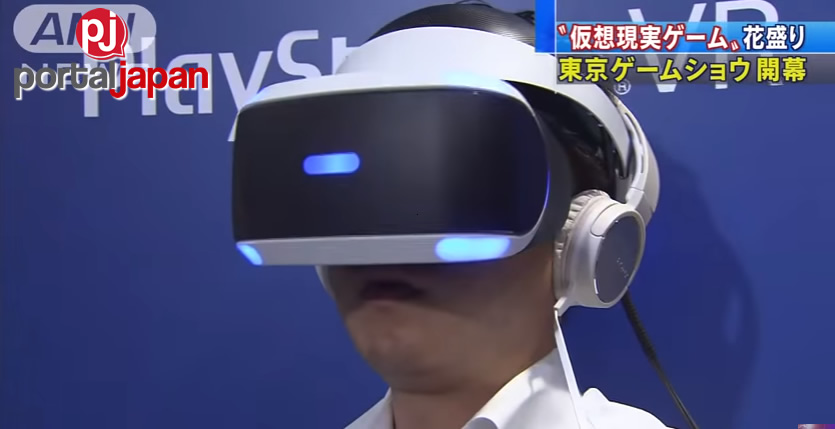Virtual reality has arrived for real at the Tokyo Game Show, one of the world’s biggest exhibitions for the latest in fun and games.
That’s evident everywhere. Players at the booths are donning chunky headgear covering their eyes and ears, immersed in their own worlds, shooting imaginary monsters or dancing with virtual partners, at Makuhari Messe hall in Chiba Prefecture.

The show, which gave a preview to reporters Thursday ahead of its opening to the public over the weekend, features 614 companies demonstrating more than 1,500 game software titles.
It’s still anyone’s guess how VR will play out as a business in years ahead. But most everyone agrees that’s the way of the future. And Yasuo Takahashi, director at Sony Interactive Entertainment, the game division of Japanese electronics and entertainment giant Sony Corp., believes 2016 will mark VR’s debut year, helping revive an industry that has languished with the advent of smart phones.
One reason for Sony’s high hopes for VR: Tokyo-based Sony’s PlayStation VR headgear device, going on sale next month for about $400, is the first that might put VR within reach for many regular homes, according to some analysts. Rival VR headsets cost more: Oculus Rift goes for about $600, and HTC Vive $800.
Although VR’s applications vary from job training and real-estate previews to news reporting and education, it’s expected to take off in games first.
A recent survey of 635 industry experts including startup executives and investors, carried out jointly by legal company Perkins Cole and Upload, cited “lack of compelling content” as the biggest challenge for VR’s future. But respondents were most focused on games.
Source: Japan Today Image: ANN
















Join the Conversation